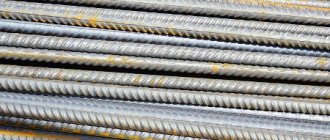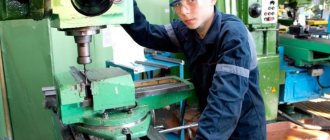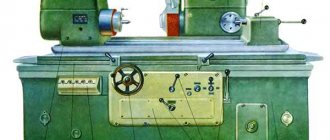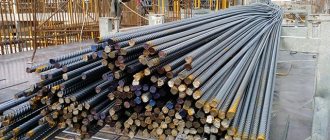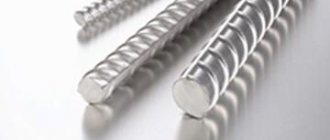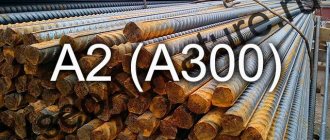The pipe design includes various flange connections, tees, bends and other products. To seal joints in such structures, steel gaskets are used, which contain a minimal amount of carbon.
Christmas tree fittings are designed to solve many problems. In particular, one of these tasks is the installation of piping of pipelines for various purposes. The use of this equipment allows you to control the movement of the working environment and ensure the execution of processes that control production. The devices are used to seal branches from main pipelines.
Purpose of fountain fittings
Devices of this class are responsible for solving the following engineering and technical problems:
- ensuring well sealing;
- diversion of products transported through the pipeline system;
- to adjust and maintain well flow;
- when providing access to the well bottom;
- to ensure sampling without stopping production processes.
Products of this class are used at high pressures arising under the influence of loads. Fittings are used when there is a possibility of exposure to aggressive environments inside the well. Quite often it is used if the liquid contains a large number of impurities of different origins and sizes.
When using such a system, it is necessary to take into account that this equipment must have a long service life and the necessary margin of safety. The main consumers of these products are enterprises engaged in the production and transportation of hydrocarbons, as well as the construction of pipeline transport systems.
Drives
A valve drive is a device that ensures movement of the locking element, as well as creating the necessary force to ensure sealing of the valve. Drives are used in situations where shut-off valves have large overall dimensions and manual rotation of the flywheels requires the application of too much physical effort, incomparable to human capabilities. Another important function of the drives is the possibility of remote control, which allows you to quickly carry out all work on shutting off or regulating the flow of media in pipeline networks without human presence.
GOST 24856-2014 establishes the following classification of shut-off valves by type of actuator:
- Manual - human physical strength is used to move the actuator.
Rice. 18 Types of drives
- Electric (electric) - to perform its functions, the fittings use electromechanical mechanisms that provide translational or rotational (multiple or partial) movement of the spindle.
- Electromagnetic (solenoid) - the energy conversion of electric current occurs in an electromagnetic coil, which, due to its field, moves a ferromagnetic core connected to the spindle of the device. Based on the method of arrangement of the electromagnetic coil, a distinction is made between those built into the fittings and block units located outside the device body. Based on the type of action of the electromagnet, there are designs of reversible, pulling, pushing, and rotary types.
- Pneumatic - compressed air is used to control the shut-off or control mechanism.
- Hydraulic drive (hydraulic) - the movement of the actuator is carried out using fluid supplied under pressure.
- Pneumatic and hydraulic is a combined design, the actuating element of which moves with the help of compressed air and liquid supplied under pressure.
- Electrohydraulic (electrohydraulic) - the movement of the actuator is realized by supplying the mechanism with electric current and liquid under pressure.
Rice. 19 Materials for manufacturing a household ball valve using the example of the Bugatti model
Types of fittings
GOST, which are in force in our country, define the following types of Christmas tree fittings:
- Tee (cross) - the scheme allows you to connect taps to prefabricated and metering installations using flow lines.
- Double-row (single-row) - it is equipped with valves or taps. The former are used to work in oil wells, the latter - in gas wells.
In addition to the classification described above, the following is also used:
- By pressure. Typical equipment operates at pressures from 7 to 105 MPa. Valves that are designed to operate at high pressure are used for working in deep wells. In addition, it is installed in wells in which the presence of dangerous formation pressure has been noted.
- According to the size of the barrel passage. This size ranges from 50 to 150 mm. Devices with working diameters from 100 to 150 mm are installed in oil and gas wells with high flow rates.
The designer, when selecting material for the production of reinforcement, must take into account the properties of the environment. By the way, to install products in an explosive environment, it is not advisable to install components and assemblies made of cast iron.
Typical fittings include different types of gate valves, valves, etc. Special piping includes pressure reducing valves, gates and valves for supplying catalysts and operating backup fittings.
Designation AFK
The decoding is given in the GOST 13846 standard. This designation implies the wellhead installation of Christmas tree equipment, a distinctive feature of which is the suspension of external tubing pipes above the pipe head by a sub. When working with FA, you can come across the following designations, which are divided into categories:
- The first 2 capital letters indicate the type of product AF - fountain fittings; EF - fountain tree; EH—discharge tree;
- The method of suspending a downhole pipeline, which is the tubing column K - the conductor to the pipe head; if there is no designation, fastening with a coupling or pipe holder inside the cross.
- Extraction method: E - electric centrifugal pump; Ш - hose installation.
- Control: A - Automatic; D - remote;
- Corrosion protection: K1 - K3;
- Permissible operating pressure: 14 MPa - 105 MPa;
The customer can also select additional characteristics for the selected AFK design, based on the needs and location of operation. This set of wellhead equipment is designed to solve the following problems:
- monitoring the control of working environment parameters;
- stopping equipment in case of an accident;
- ensuring the tightness of the structure;
- liquid injection;
- lowering the necessary working equipment;
AFK type fittings are widely used in various fields - for flowing wells, with rod and electric submersible pumps, for onshore and offshore work, and mineral extraction.
Xmas tree design
GOST 13846–84, implies the use of tee and cross type circuits. Typical fountain fittings include the following components:
- pipe head;
- fountain tree;
- manually controlled locking devices;
- chokes.
The pipe head is designed to hang tubing in several rows on it and ensure their tightness. In addition, it takes part in some technological processes associated with the development, operation and maintenance of the well.
This device, if necessary, replaces the side valves installed on it. For this purpose, blind plugs are used, installed in threads cut in the body.
The fountain tree is designed to solve the following problems:
- sending finished products to the line;
- taking part in the installation of additional devices;
- performing measurements of pipeline network operating parameters;
- ensuring the lowering of devices for cleaning well pipes.
Locking devices are represented by plug valves and gate valves with supplied lubricant. Their main task is to block the movement of the working environment.
Shut-off valves - main technical parameters
The technical characteristics of shut-off valves are important when used in industrial, municipal and household sectors. The main parameters are often indicated on the body of products when they are cast or stamped; usually the symbols have a protruding raised surface. GOST 24856-2014 gives the following definitions for the main characteristics of shut-off valves:
- Nominal parameters are numerical indicators of functional characteristics from a standardized range of values, given without tolerances for deviations.
- Nominal or conditional pressure PN (nominal pressure) - the maximum pressure indicator, expressed in kilograms per second, bars or atmospheres at a constant temperature of the transported medium of 20 ° C, at which the shut-off valves of pipelines operate during the service life prescribed by state standards.
- Nominal diameter DN (nominal diameter) is a dimensional parameter approximately equal to the internal cross-sectional size of devices. The DN indicator is measured in millimeters and is taken equal to one of the values of the standardized series. DN serves as the main dimensional indicator when choosing any type of fittings.
Rice. 21 Polymer taps
- Operating pressure (line pressure; operating pressure; service pressure; working pressure) - the highest excess pressure at which pipeline fittings fulfill their service life with selected materials and a given temperature.
- time is the time interval during which the locking element moves from the “open” to the “closed” position or vice versa.
- Flow area or passage (flow area) - a section at an angle of 90 degrees relative to the direction of flow at any point in the passage section of the fittings.
- Leak or leakage (leak; leakage) - penetration of the transported medium outside the dimensions of the housing, caused by the difference in pressure between the supplied flow and atmospheric air. It is measured in the volume of the working fluid coming out per unit time when the shutter mechanism is closed.
- Normal or standard conditions (normal conditions) - characteristics of the environment for measuring the volume of gases: correspond to a temperature of 20 ° C and an atmospheric pressure of 760 mm Hg. Art. at zero humidity.
- Design temperature - temperature parameters of the casing walls of the device, equal to the arithmetic average of the values measured on the inner and outer shell of the device when operating under normal operating conditions.
Rice. 22 How to correctly formulate the name of the valve, its symbol and an example of body marking
Shut-off valves for pipelines are widely used in all industries, utilities, and households to control the flow of media transported through pipelines. The shut-off valves chosen by the average consumer for heating and water supply must meet the requirements of compatibility with the physical and chemical characteristics of the supplied working medium, have the appropriate design, materials of manufacture, and basic technical parameters.
Technical requirements for design
GOST 13846–89 determined that Christmas tree equipment is designed to seal wells, block the movement of the working medium and perform other technological procedures. In accordance with the standards regulated in GOST 15150–69, these devices can operate at temperatures from -60 to +40 degrees.
GOST 51365–2009 defines the technical conditions and requirements for the specified fittings. Designers involved in the design of equipment should be guided by the requirements of this document.
Strapping diagram, composition and purpose
FA is a durable, durable multifunctional equipment that performs a number of specific technological tasks. The main functions performed by the FA:
- typical pipeline piping;
- complete sealing;
- ensures uninterrupted removal of products moving through the pipeline;
- if necessary, access to the face;
- to regulate productivity;
- for technological work with a constant production process.
One of the main tasks that the FA performs is the arrangement of pipeline piping for various purposes, control of the movement of the working medium, and sealing of waste from the main pipeline lines. Almost any work related to pipeline installation will involve a typical Christmas tree design.
Marking of fittings
To mark this type of product, alphanumeric abbreviations are used, which are designated as follows: AFKh or AFKH, where AF indicates the type of fittings, in this case the fittings are fountain, the letter “K” indicates the method of hanging the pipeline. The letter X (from 1 to 6) indicates the diagram in accordance with GOST 13846–84. In addition, the product labeling may indicate numerical parameters showing the working diameter and pressure, climatic version and some others, in particular, the corrosion resistance class.
Types of fittings on pipelines
The term “valve type” refers to its functions, the main ones being:
- constipation,
- regulation,
- prevention,
- obstacle to reverse movement,
- stream separation.
Shut-off valves (on-off, shut-off, stop) are technical devices that perform the function of hermetically shutting off the flow of the transported working fluid.
In addition to the main locking type, in the technical industry there are the following types of combined or multifunctional (combined, multifunction), combining different functions of fittings:
Shut-off and control (on-off and control) - in addition to completely blocking the flow, shut-off control valves for heating, water supply and other needs are capable of changing the volume of a moving medium by partially blocking the channel passage.
Stop and check - in addition to blocking the channel passage, it prevents the passage of the medium in the opposite direction.
Non-return shut-off (stop non-return) - in addition to preventing flow movement in the opposite direction, it implements the function of forced closing or limiting the movement of the shutter element.
Rice. 3 Sectional design of shut-off valves
Installation and dismantling of fountain fittings
During the operation of an oil or gas well, the structure is installed. Column heads are used for connection. The holes located in the upper flange allow you to fix parts of different sizes. The equipment installation process is carried out in several steps.
A gasket made of low-carbon steel and having an oval shape is placed in the space between the flanges. Using an elevator, the pipe string is lowered to the installation site. After this, the pipes are assembled together using threaded connections. By the way, it makes sense to coat the threads with a protective lubricant before assembly. After completing assembly of the installation, it is necessary to carry out pressure testing.
Repair of this equipment must be performed only at special enterprises. Before sending it for repair, the unit must be disassembled. The tree must be washed and at this time the remaining components must be examined.
The Christmas tree fittings and their piping scheme are designed so that they can protect the environment from the influence of the working medium supplied in the pipeline system.


